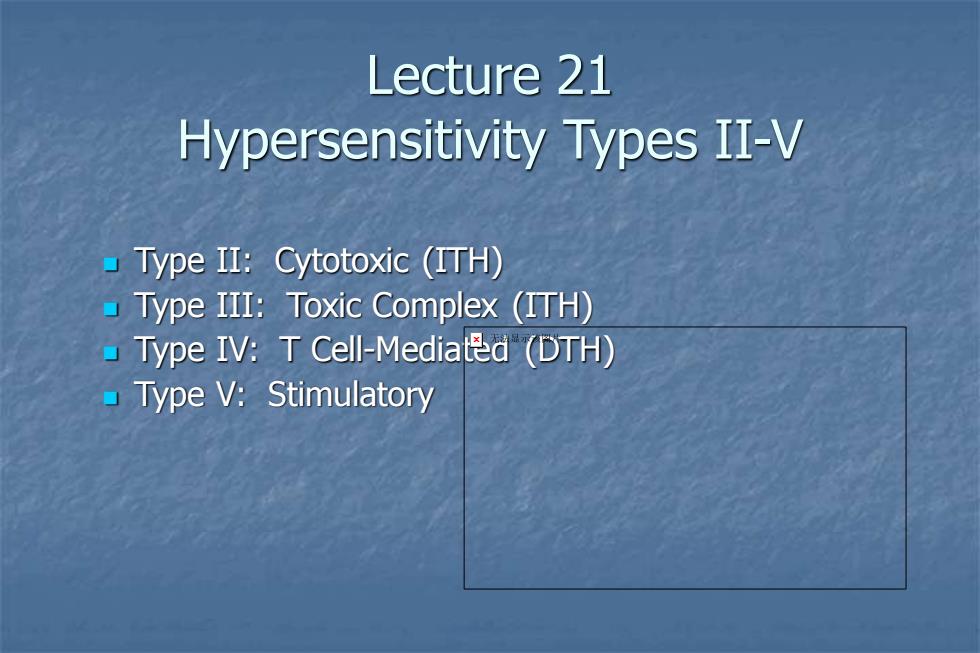
Lecture 21 Hypersensitivity Types II-V Type II:Cytotoxic (ITH) Type III:Toxic Complex(ITH) Type IV:T Cell-Mediated (DTH) Type V:Stimulatory
Lecture 21 Hypersensitivity Types II-V ◼ Type II: Cytotoxic (ITH) ◼ Type III: Toxic Complex (ITH) ◼ Type IV: T Cell-Mediated (DTH) ◼ Type V: Stimulatory
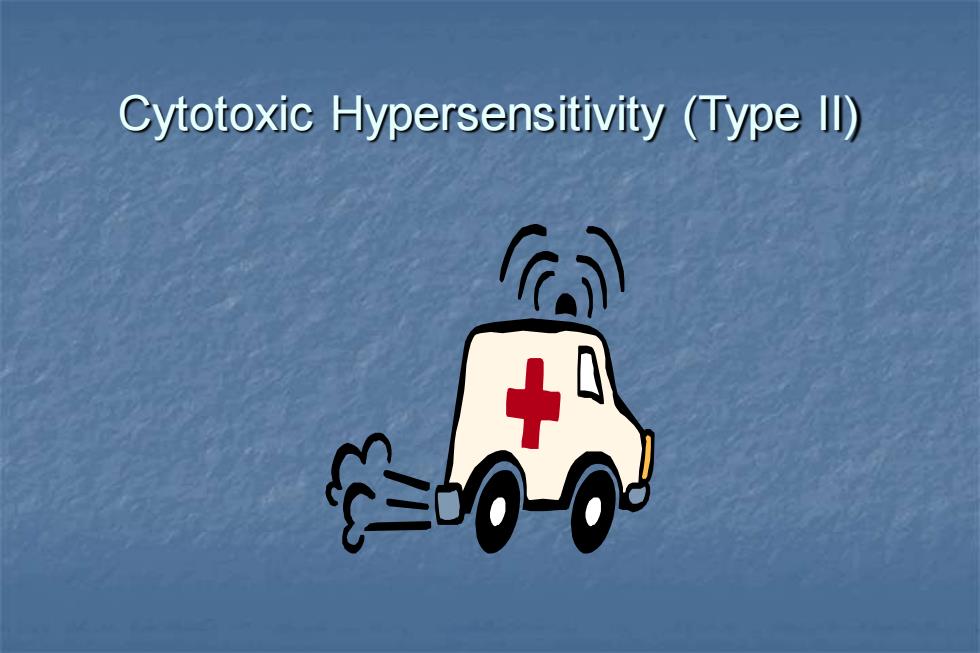
Cytotoxic Hypersensitivity (Type ll) 最
Cytotoxic Hypersensitivity (Type II)
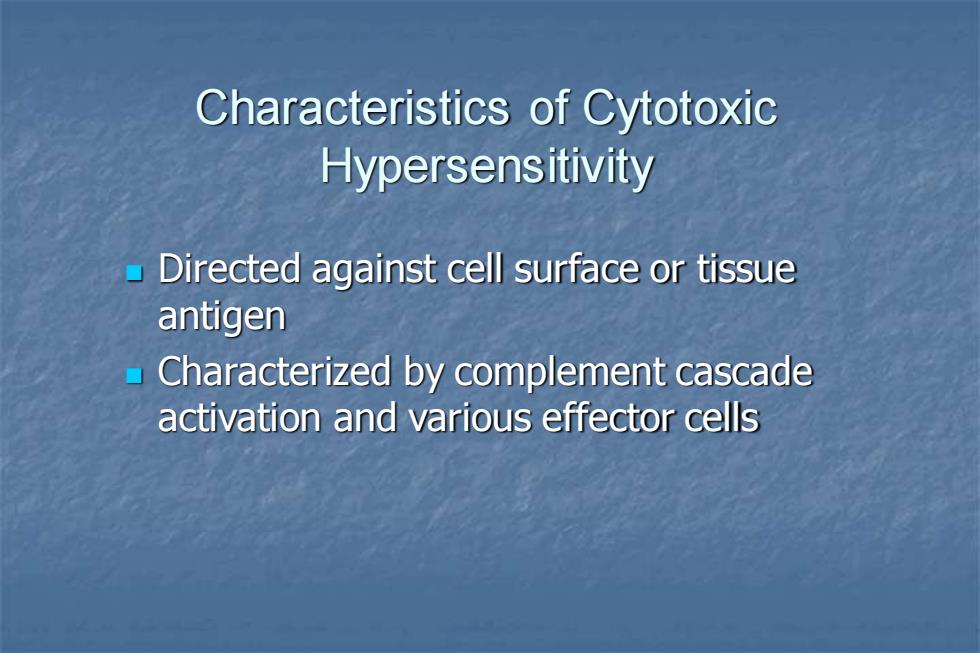
Characteristics of Cytotoxic Hypersensitivity Directed against cell surface or tissue antigen Characterized by complement cascade activation and various effector cells
Characteristics of Cytotoxic Hypersensitivity ◼ Directed against cell surface or tissue antigen ◼ Characterized by complement cascade activation and various effector cells
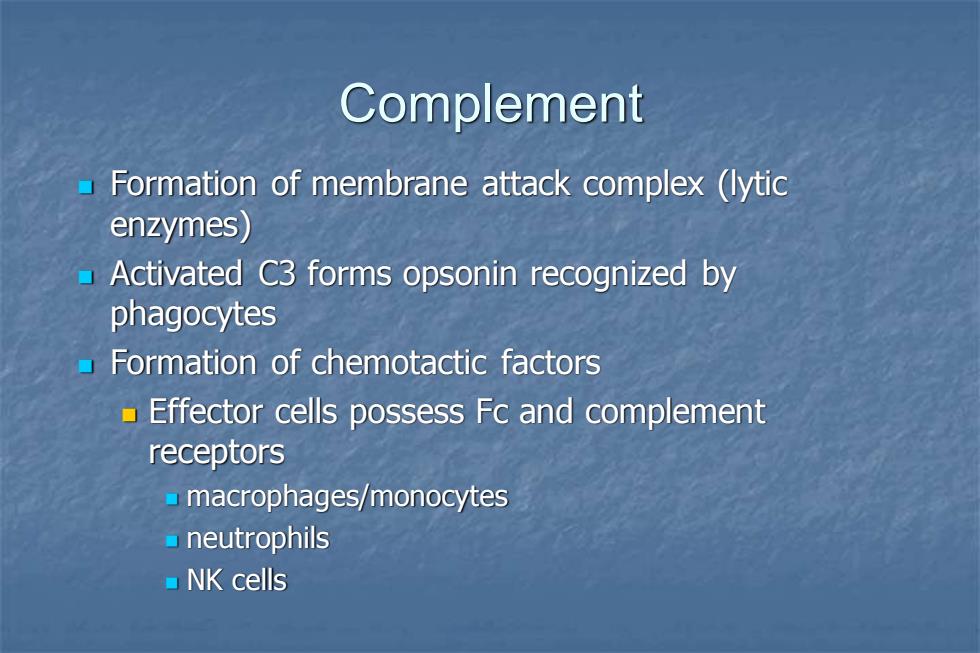
Complement Formation of membrane attack complex (lytic enzymes) Activated C3 forms opsonin recognized by phagocytes Formation of chemotactic factors Effector cells possess Fc and complement receptors macrophages/monocytes neutrophils NK cells
Complement ◼ Formation of membrane attack complex (lytic enzymes) ◼ Activated C3 forms opsonin recognized by phagocytes ◼ Formation of chemotactic factors ◼ Effector cells possess Fc and complement receptors ◼ macrophages/monocytes ◼ neutrophils ◼ NK cells
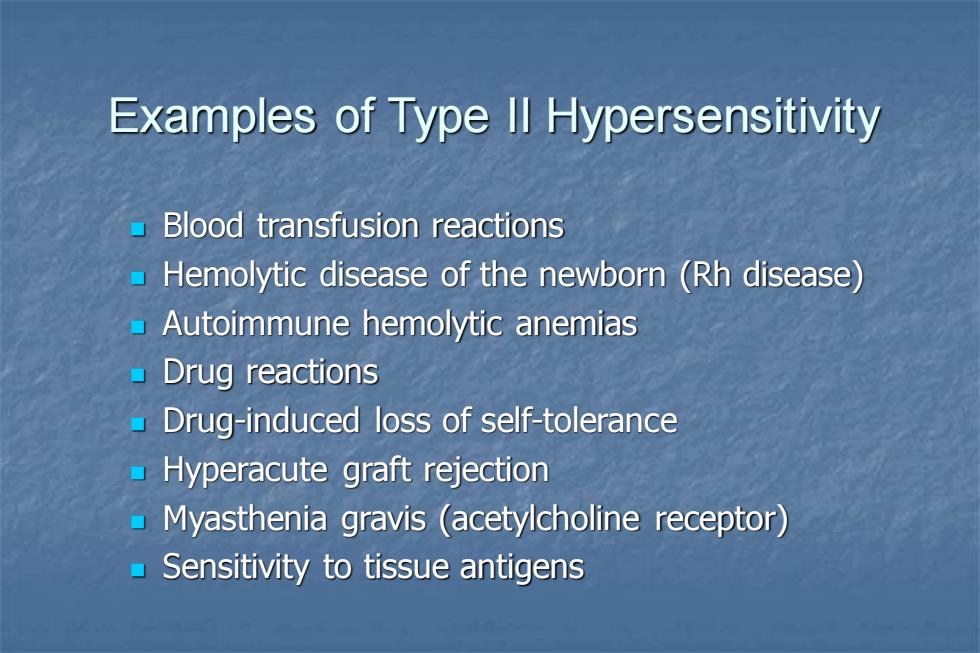
Examples of Type lI Hypersensitivity Blood transfusion reactions Hemolytic disease of the newborn (Rh disease) Autoimmune hemolytic anemias Drug reactions Drug-induced loss of self-tolerance Hyperacute graft rejection Myasthenia gravis(acetylcholine receptor) Sensitivity to tissue antigens
Examples of Type II Hypersensitivity ◼ Blood transfusion reactions ◼ Hemolytic disease of the newborn (Rh disease) ◼ Autoimmune hemolytic anemias ◼ Drug reactions ◼ Drug-induced loss of self-tolerance ◼ Hyperacute graft rejection ◼ Myasthenia gravis (acetylcholine receptor) ◼ Sensitivity to tissue antigens